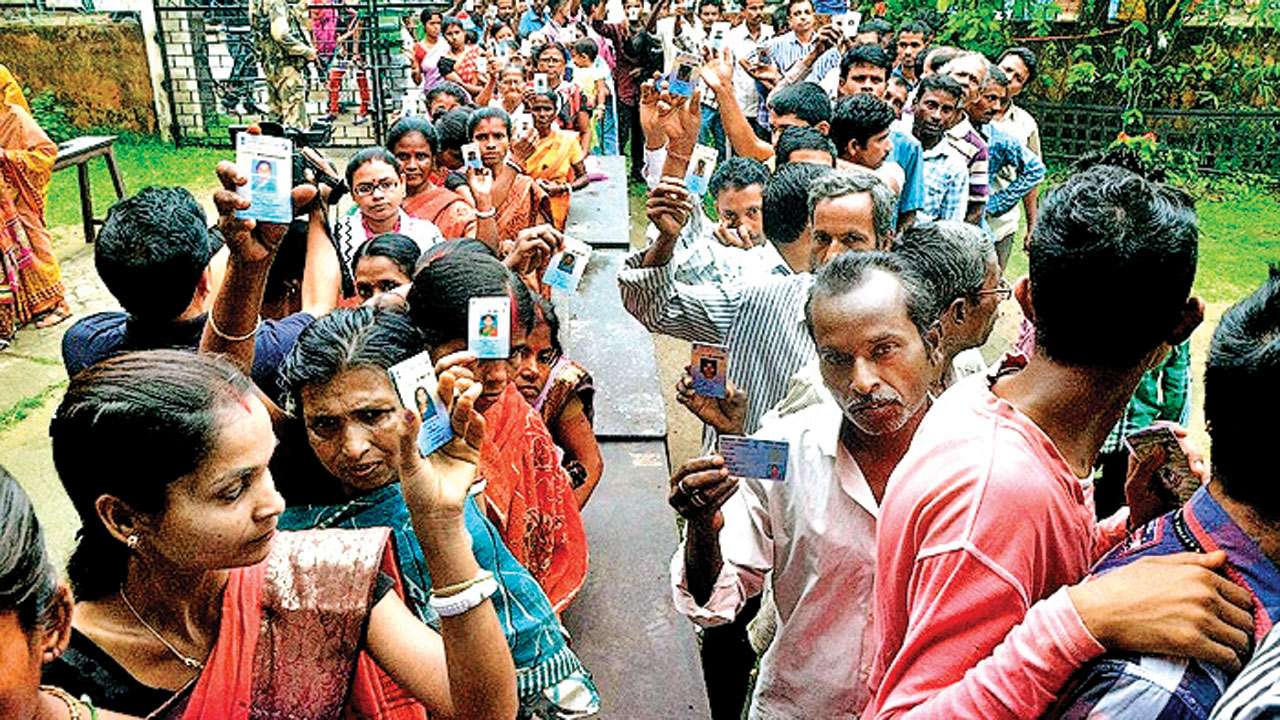
So are you a Gandhi fan or Modi fan? If you are the former, you represent inclusiveness and vote for Congress. If you are a Modi fan, you stand for the Ram temple, ban on cow slaughter, and probably sport a tilak on your forehead. Right? Wrong.
The last five years have seen the unpeeling of stereotypical classifications of political loyalties more than ever before. In the 2014 election itself, these visual constructs were a bit hazy as the large aspirational masses of Modi supporters also included the disgruntled farmers, workers, and non-Muslim minorities who believed in Modi’s ability to deliver. The polls seemed to wedge the country’s diverse, multi-cultural, multi-ethnic, and multi-religious populations into two cleanly defined monolithic blocks – pro and anti. And, it was not always easy to tell who belonged where.
The forthcoming election will be as polarised as the last one. However, it will probably record the maximum shift in voting patterns in the shortest time along different dimensions. Prime Minister, Narendra Modi continues to be the pivot this time as well but the references, preferences, and bases have shifted slightly or a little more.
One. Even as the core anti-Modi vote bank comprising the left and the “liberals” continues to disapprove of him, there has been a perceptible, if not significant, erosion of this constituency. Some of them, like Prahlad Kakkar, see him as earnest, genuine, and capable. Even while not being entirely in sync with him, this grouping is leaning towards Modi the administrator.
Two, Modi had pockets of supporters among the Christians and the Muslims in 2014 that appear to have dissipated. The Christians, by and large, appear more determinedly arraigned against him this time. There are visible signs of mobilisation of these communities at their places of worship and at political gatherings.
Three, the new face in the anti-Modi pantheon is that of the Dalit. Subversive politics which played up the Supreme Court order as an attempt to do away with reservations and imaginary slights to Babasaheb Ambedkar have whipped up a wave of resentment among the Dalits against the BJP. The divisive hand of the Opposition which propped up poster boys of caste groupings such as Patels, Thakors, Lingayats, etc is also likely to earn them handsome returns.
Four, if the contours of caste, intellectual, and religious topography have realigned a bit, so has the geography. In 2014, large swathes of the pro-Modi vote dominated the northern and western landscapes of the country. This time, the picture is unclear. The BJP would hope to consolidate its position in the north-eastern and southern states instead where its focussed attention has earned it encouraging feedback. Although it did well in states like Arunachal Pradesh (46% votes) and Karnataka (43% votes) the last time, the party could expect to better its performance in parts of these regions, such as Tamil Nadu, even as it fears losing the perception battle in Andhra Pradesh. It will also be interesting to see if the new constituency of Netaji fans in West Bengal, which gave BJP just 17% votes in 2014, can be vectored towards BJP.
Five and Six. This election will also be known for the blurring of ideological boundaries. On one hand, Priyanka and Rahul Gandhi are confusing their traditional vote banks with their new-found love for temples. On the other, hardline Hindutva adherents are disappointed with the BJP’s soft-pedalling on the Ram temple issue. If Modi had the soundest backing from the extreme right in 2014, that support has waned.
Seven. If the Gandhi siblings are temple-hopping in election season, Modi has been reconstructing the real Gandhi in the public space for the past five years. He has done more than any of his predecessors to keep Mahatma Gandhi alive in public memory. By launching his government’s flagship Swachh Bharat campaign on Gandhi Jayanti in 2014 and promoting his legacy through the revival of khadi and countless references to India’s foremost contemporary hero, he has imbued Hindutva with a flavour of benevolent nationalism while also shaking the foundational equivalence of his main opponents.
When two mainstream parties militantly tread on each other’s ideological crutches, the perceptional spurs come a bit undone. A BJP supporter thus, need not be a Gandhi-hater and a Congress supporter need not hide the vermillion on his forehead. Of course, the symbolisms may or may not sink into the psyche of the targeted voter, but this will be the first election when even the ideologies are not as symmetrically arraigned as they were in 2014. In catchy prose, it is a free-for-all.
Author is a senior journalist and communications consultant.